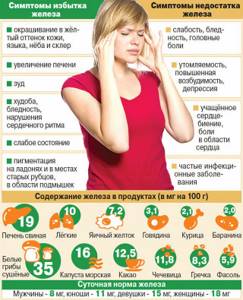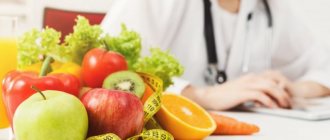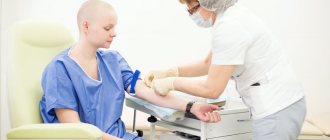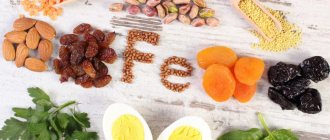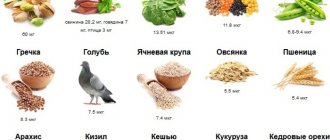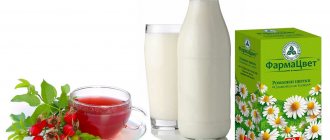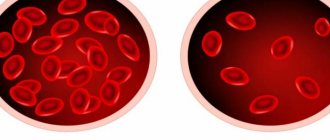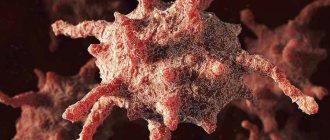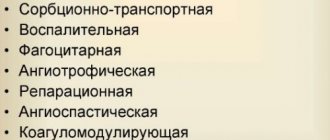Anemia is a common accompanying symptom of cancer. In another way it is called anemia. Its cause is a decrease in the level of hemoglobin in the blood. This is a protein that is found in red blood cells (erythrocytes) and is responsible for transporting oxygen and oxygen supply to tissues. It also takes in carbon dioxide, which is formed during the metabolic process.
Without oxygen, metabolism, and therefore life itself, is impossible. A decrease in hemoglobin leads to oxygen starvation, which is manifested by weakness, fatigue, dizziness, and headache. Other signs of anemia are pallor, rapid pulse, shortness of breath, tinnitus, swelling, and chest pain. Some symptoms indicate a deficiency of vitamin B12 and iron.
Anemia and oxygen deprivation weaken the body and worsen the prognosis of cancer treatment. On the one hand, anemia depresses the human immune system, preventing it from fighting cancer cells at full strength.
On the other hand, low hemoglobin reduces the effectiveness of chemotherapy drugs, as well as radiation therapy, which has been proven in clinical studies. General weakness of the body limits the possibilities of surgical treatment. That is why treating anemia and increasing hemoglobin levels is one of the primary tasks for cancer.
Especially often, a decrease in hemoglobin occurs in cancer of the kidney, lung, ovaries, uterus, bladder, lymphomas, myelomas.
We will call you back, leave your phone number
Message sent!
expect a call, we will contact you shortly
General rules
Hematopoietic processes in the human body occur with the participation of a number of substances (hormone-like glycoproteins , trace elements of iron, copper, vitamin B12 , B6 , B2 and C , folic acid ). Their deficiency leads to various types of anemia , each of which has its own specifics. The most common cause of anemia is iron deficiency, in which there is a decrease in the total amount of hemoglobin (a decrease in the concentration of hemoglobin per unit volume of blood).
Normal hemoglobin levels in men are 130-160 g/l, in women - 120-140 g/l. In a healthy body, a certain balance is maintained between the consumption/intake of iron, the daily requirement of which is 15-20 mg. The main amount of iron entering the bone marrow is endogenous iron, formed during the breakdown of red blood cells in the spleen/liver.
Exogenous iron enters the body with food in an average amount of 10-15 mg, but its absorption is extremely low and does not exceed 10%. In food (proteins/salts of organic acids), iron is only in the oxidized state - Fe3+. When food enters the stomach under the influence of gastric juice, iron is ionized to Fe2+ and in this form is absorbed in the body, mainly in the duodenum. Iron contained in the body can be divided into used (part of hemoglobin) and stored iron (in the form of ferritin, stored in macrophages/hepatocytes/muscle tissue).
Iron deficiency is a serious problem that causes changes in the functions of various organs/systems. The most common causes of iron deficiency in the body are: chronic blood loss of various origins, increased need for iron (intensive growth in childhood, pregnancy /lactation, nutritional deficiency - vegetarianism/malnutrition, impaired iron absorption/parietal digestion in the small intestine, enteritis, infectious diseases, Crohn's disease ), chronic alcohol intoxication , excessive physical activity, taking certain medications ( antibiotics , anticoagulants, hormonal contraceptives). Nutritional deficiency is the mildest, and moderate/severe iron deficiency usually occurs as a result of bleeding (gastrointestinal/uterine).
The main objectives of treating iron deficiency anemia and, accordingly, increasing hemoglobin levels are:
- eliminating the immediate cause of anemia;
- eliminating iron deficiency/replenishing its reserves in the body, which is facilitated by diet and taking iron supplements.
The diet for increasing hemoglobin is based on the inclusion in the diet of foods that increase hemoglobin (containing large amounts of iron). At the same time, it is important to take into account not only the quantitative content of iron, but also its form, degree of absorption/possibility of absorption by the body. It is necessary to understand that the overwhelming amount of iron supplied from food is represented by the non-heme form contained in products of plant origin, the bioavailability of which is much lower (1-5%) than iron in the heme form (on average, digestibility is 25-30%). contained in protein products of animal origin.
Therefore, the diet should contain an increased amount of animal proteins (at the level of 120/130 g/day). Protein is extremely important for the process of hemoglobin synthesis/building red blood cells and the formation of absorbable iron compounds. The best source of heme iron is red meat (veal/beef/lamb). Iron from chicken/pig meat is absorbed to a lesser extent, and iron absorption from liver and fish is even worse, since it is contained in the form of ferritin/hemosiderin. In addition to these products, it is recommended to include beef tongue, rabbit meat, liver/blood sausage, chicken yolk, turkey, sprats, sardines, oysters, chicken liver, cheese, cod/pink salmon, and cottage cheese in the diet. It is these foods that should form the basis of the diet to increase hemoglobin levels.
It is also necessary to include in the diet products of plant origin containing non-heme iron - wheat bran, grain bread, pistachios, flax seeds, asparagus, sesame, soy, buckwheat, oatmeal, peanuts, vegetables/fruits (cress, zucchini, squash , beets, sauerkraut, onions, fresh cabbage, greens, tops of carrots, radishes, mustard, nettles, turnips, dandelion leaves, pineapples, peaches, apricots, strawberries, cherries, apples, wild strawberries, raspberries, pears, oranges, plums, black currants), dried fruits.
However, the bioavailability of iron from these products is largely determined by the predominance of factors in the diet that inhibit/potentiate intestinal ferroabsorption. Thus, iron absorption is enhanced by: vitamin C , hydrochloric acid (contained in gastric juice), fructose (honey, fruits), and worsened by drugs that reduce the acidity of gastric juice (antacids/antisecretory drugs), calcium (dairy products), oxalates ( spinach), tannins (tea), phytins/phosphates (legumes, walnuts, almonds), polyphenols (cocoa, coffee, chocolate and some types of herbal tea), which form insoluble compounds with Fe (III) and are excreted in the feces.
Alcohol-containing drinks, when consumed together with food, destroy iron. Heme iron is heat-stable, but products with non-heme iron are not resistant to high temperatures, so it is not recommended to subject them to long-term heat treatment.
A diet to increase hemoglobin involves limiting fat (up to 70 g), since fat inhibits the process of hematopoiesis. Preference is given to easily digestible fats - butter/vegetable oil. Fatty sausages, animal fats, fatty meats and domestic waterfowl (duck/goose) are limited. The carbohydrate content is within the physiological norm (350-400 g), with the inclusion of both complex (grain bread, cereals, muesli, fruits) and simple carbohydrates (honey, jam).
However, no matter how rich in iron the diet is, it is impossible to increase hemoglobin with food if anemia has already developed without taking iron-containing drugs. At best, a diet high in iron covers only the body’s physiological need for it, but does not eliminate its deficiency in anemia. Preference is given to the oral form of drugs.
In the treatment of iron deficiency conditions, iron-containing drugs based on the polymaltase complex of Fe (III) hydroxide - Maltofer / Maltofer Fol , Ferro-Folgamm , which in addition to iron contain folic acid , which stimulates erythropoiesis, are actively prescribed.
Iron supplements should be taken 1 hour before meals, preferably in the evening, since the process of iron absorption increases in the second half of the day.
Frequent meals
Eating infrequently is often a sign of a decline in hemoglobin. Even if you eat foods enriched with iron, but extremely rarely, this will not give the long-awaited result. Iron is found in beef, chicken liver, products containing pectin, seaweed, rose hips, and buckwheat porridge. The amount of food must be of high quality. If you have anemia, you don’t need to fill your belly, following the rule: the more, the better, but eating well three times a day is the main condition for recovery. You should definitely have snacks between main meals - this will give you a tremendous boost of energy.
Authorized Products
A diet to increase hemoglobin includes foods containing the maximum amount of iron in the diet:
- soups with strong meat/fish broth with the addition of cereals, legumes, pasta made from durum flour;
- red meat (beef), offal (beef/chicken/pork liver, beef tongue, chicken stomachs and hearts), sausages (ham, liver/blood sausage, sausages), fish/fish products (sardines, sprats, caviar, balyki), seafood (squid, mussels, shrimp), butter/vegetable oil;
- fermented milk products, cheeses, cottage cheese;
- flour products, wheat/rye bread;
- fresh vegetables/fruits/in any culinary preparation, especially with a high content of ascorbic acid (rose hips, chokeberries, citrus fruits, black currants), garden greens;
- dried fruits (prunes, dried apricots, raisins), seeds/nuts – cashews, almonds, pistachios, sunflower/pumpkin seeds, honey, jams, preserves;
- wheat bran, rosehip decoction, vegetable/fruit juices, still mineral waters.
Table of permitted products
| Proteins, g | Fats, g | Carbohydrates, g | Calories, kcal | |
Vegetables and greens | ||||
| boiled cauliflower | 1,8 | 0,3 | 4,0 | 29 |
| boiled potatoes | 2,0 | 0,4 | 16,7 | 82 |
| boiled carrots | 0,8 | 0,3 | 5,0 | 25 |
| salad pepper | 1,3 | 0,0 | 5,3 | 27 |
| boiled beets | 1,8 | 0,0 | 10,8 | 49 |
| dill | 2,5 | 0,5 | 6,3 | 38 |
Fruits | ||||
| apricots | 0,9 | 0,1 | 10,8 | 41 |
| oranges | 0,9 | 0,2 | 8,1 | 36 |
| cherry | 0,8 | 0,5 | 11,3 | 52 |
| grapefruit | 0,7 | 0,2 | 6,5 | 29 |
Berries | ||||
| cranberry | 0,5 | 0,0 | 6,8 | 26 |
| gooseberry | 0,7 | 0,2 | 12,0 | 43 |
| Rowan | 1,5 | 0,1 | 10,9 | 50 |
| currant | 1,0 | 0,4 | 7,5 | 43 |
| rose hip | 1,6 | 0,0 | 14,0 | 51 |
Nuts and dried fruits | ||||
| nuts | 15,0 | 40,0 | 20,0 | 500 |
| prunes | 2,3 | 0,7 | 57,5 | 231 |
Cereals and porridges | ||||
| buckwheat (kernel) | 12,6 | 3,3 | 62,1 | 313 |
| oat groats | 12,3 | 6,1 | 59,5 | 342 |
| cereals | 11,9 | 7,2 | 69,3 | 366 |
| Wheat groats | 11,5 | 1,3 | 62,0 | 316 |
| wheat bran | 15,1 | 3,8 | 53,6 | 296 |
Bakery products | ||||
| wheat bread | 8,1 | 1,0 | 48,8 | 242 |
| whole grain bread | 10,1 | 2,3 | 57,1 | 295 |
Confectionery | ||||
| jam | 0,3 | 0,1 | 56,0 | 238 |
Raw materials and seasonings | ||||
| honey | 0,8 | 0,0 | 81,5 | 329 |
Dairy | ||||
| condensed milk | 7,2 | 8,5 | 56,0 | 320 |
| kefir 3.2% | 2,8 | 3,2 | 4,1 | 56 |
| cream 15% (low fat) | 2,3 | 15,0 | 3,6 | 161 |
| sour cream 15% (low fat) | 2,6 | 15,0 | 3,0 | 158 |
Cheeses and cottage cheese | ||||
| cheese | 24,1 | 29,5 | 0,3 | 363 |
| cottage cheese | 17,2 | 5,0 | 1,8 | 121 |
Meat products | ||||
| lean pork | 16,4 | 27,8 | 0,0 | 316 |
| pork liver | 18,8 | 3,6 | 0,0 | 108 |
| beef | 18,9 | 19,4 | 0,0 | 187 |
| beef liver | 17,4 | 3,1 | 0,0 | 98 |
| beef brains | 9,5 | 9,5 | 0,0 | 124 |
| calf liver | 19,2 | 3,3 | 4,1 | 124 |
| mutton | 15,6 | 16,3 | 0,0 | 209 |
| rabbit | 21,0 | 8,0 | 0,0 | 156 |
| ham | 22,6 | 20,9 | 0,0 | 279 |
| liver pate | 11,6 | 28,9 | 2,5 | 317 |
| beef stew | 14,1 | 17,4 | 0,0 | 214 |
Sausages | ||||
| smoked sausage | 16,2 | 44,6 | 0,0 | 466 |
| blood sausage | 9,0 | 19,5 | 14,5 | 274 |
| beef sausages | 11,4 | 18,2 | 1,5 | 215 |
Bird | ||||
| chicken liver | 20,4 | 5,9 | 1,4 | 140 |
| turkey | 19,2 | 0,7 | 0,0 | 84 |
| turkey liver | 19,5 | 22,0 | 0,0 | 276 |
| goose liver | 15,2 | 39,0 | 0,0 | 412 |
Eggs | ||||
| chicken eggs | 12,7 | 10,9 | 0,7 | 157 |
Fish and seafood | ||||
| brown algae | 1,7 | 0,6 | 8,3 | 43 |
| pink salmon | 20,5 | 6,5 | 0,0 | 142 |
| Red caviar | 32,0 | 15,0 | 0,0 | 263 |
| cod roe | 24,0 | 0,2 | 0,0 | 115 |
| pike caviar | 17,3 | 2,0 | 0,0 | 87 |
| squid | 21,2 | 2,8 | 2,0 | 122 |
| shrimps | 22,0 | 1,0 | 0,0 | 97 |
| salmon | 19,8 | 6,3 | 0,0 | 142 |
| mussels | 9,1 | 1,5 | 0,0 | 50 |
| seaweed | 0,8 | 5,1 | 0,0 | 49 |
| herring | 16,3 | 10,7 | — | 161 |
| cod (liver in oil) | 4,2 | 65,7 | 1,2 | 613 |
| trout | 19,2 | 2,1 | — | 97 |
Oils and fats | ||||
| vegetable oil | 0,0 | 99,0 | 0,0 | 899 |
| butter | 0,5 | 82,5 | 0,8 | 748 |
| olive oil | 0,0 | 99,8 | 0,0 | 898 |
| * data is per 100 g of product | ||||
Fully or partially limited products
The diet to increase hemoglobin excludes:
- fatty meats/fish/poultry, beef, lamb, cooking fat, spices, confectionery products with a high cream content, fatty/spicy sauces;
- milk and dairy products, parsley containing a lot of calcium, coffee, strong tea, chocolate, Coca-Cola containing tannin/caffeine, alcohol-containing drinks are limited, since ethyl disrupts the absorption of iron.
Table of prohibited products
| Proteins, g | Fats, g | Carbohydrates, g | Calories, kcal | |
Vegetables and greens | ||||
| canned vegetables | 1,5 | 0,2 | 5,5 | 30 |
| swede | 1,2 | 0,1 | 7,7 | 37 |
| radish | 1,2 | 0,1 | 3,4 | 19 |
| white radish | 1,4 | 0,0 | 4,1 | 21 |
Cereals and porridges | ||||
| corn grits | 8,3 | 1,2 | 75,0 | 337 |
Confectionery | ||||
| candies | 4,3 | 19,8 | 67,5 | 453 |
| cookie | 7,5 | 11,8 | 74,9 | 417 |
| cake | 3,8 | 22,6 | 47,0 | 397 |
Chocolate | ||||
| chocolate | 5,4 | 35,3 | 56,5 | 544 |
Raw materials and seasonings | ||||
| mayonnaise | 2,4 | 67,0 | 3,9 | 627 |
| vinegar | 0,0 | 0,0 | 5,0 | 20 |
Dairy | ||||
| sour cream 30% | 2,4 | 30,0 | 3,1 | 294 |
Meat products | ||||
| pork fat | 1,4 | 92,8 | 0,0 | 841 |
Bird | ||||
| smoked chicken | 27,5 | 8,2 | 0,0 | 184 |
| duck | 16,5 | 61,2 | 0,0 | 346 |
| smoked duck | 19,0 | 28,4 | 0,0 | 337 |
| goose | 16,1 | 33,3 | 0,0 | 364 |
Fish and seafood | ||||
| smoked fish | 26,8 | 9,9 | 0,0 | 196 |
Oils and fats | ||||
| creamy margarine | 0,5 | 82,0 | 0,0 | 745 |
| rendered beef fat | 0,0 | 99,7 | 0,0 | 897 |
| cooking fat | 0,0 | 99,7 | 0,0 | 897 |
| rendered pork fat | 0,0 | 99,6 | 0,0 | 896 |
Alcoholic drinks | ||||
| white dessert wine 16% | 0,5 | 0,0 | 16,0 | 153 |
| dry red wine | 0,2 | 0,0 | 0,3 | 68 |
| vodka | 0,0 | 0,0 | 0,1 | 235 |
| cognac | 0,0 | 0,0 | 0,1 | 239 |
| liquor | 0,3 | 1,1 | 17,2 | 242 |
| beer | 0,3 | 0,0 | 4,6 | 42 |
Non-alcoholic drinks | ||||
| cola | 0,0 | 0,0 | 10,4 | 42 |
| coffee | 0,2 | 0,0 | 0,3 | 2 |
| Pepsi | 0,0 | 0,0 | 8,7 | 38 |
| black tea | 20,0 | 5,1 | 6,9 | 152 |
| energy drink | 0,0 | 0,0 | 11,3 | 45 |
| * data is per 100 g of product | ||||
Treatment of worms
How to increase hemoglobin in the blood ? You should know that helminths are considered one of the most popular causes of low iron in the blood. It is necessary to take tests to identify the type of fluke. After this, the doctor prescribes anti-worm medications and sorbents that eliminate the toxic breakdown products of flukes from the body. As soon as the parasites are removed from the body, you will have to undergo rehabilitation therapy. Once the intestinal microflora is stabilized, metabolism and iron absorption will accelerate, and nothing will interfere with the normal increase in hemoglobin.
Reviews and results
A diet to increase hemoglobin, according to reviews from most patients, is an effective method of replenishing iron deficiency/increasing hemoglobin.
- “... I am very familiar with a diet with a high iron content, because due to the problem of heavy periods, hemoglobin is often below normal. Therefore, I immediately go on a diet and start taking iron supplements, dietary nutrition and taking iron supplements. Usually after 3-4 weeks, hemoglobin levels return to normal”;
- “... A vegetarian, the examination revealed low hemoglobin. The doctor prescribed a diet and prescribed iron tablets. Now I’m wondering whether it’s worth continuing to practice vegetarian nutrition.”
Signs of decreased hemoglobin levels
A decrease in an important indicator in the blood is characterized by the following signs:
- pale skin,
- bruises under the eyes,
- white spots are visible on the nails,
- the plates on the nails become thinner,
- hair loses its shine and splits,
- tachycardia.
Due to iron deficiency in the blood, performance deteriorates, you are constantly thirsty, and insomnia appears. After active physical training, muscles become very sore. The person becomes irritable and suffers from migraines. If you suddenly see such symptoms, you should not get carried away with self-medication, but consult a therapist for testing. After this, you can make a plan on how to restore hemoglobin in the blood and begin treatment.
